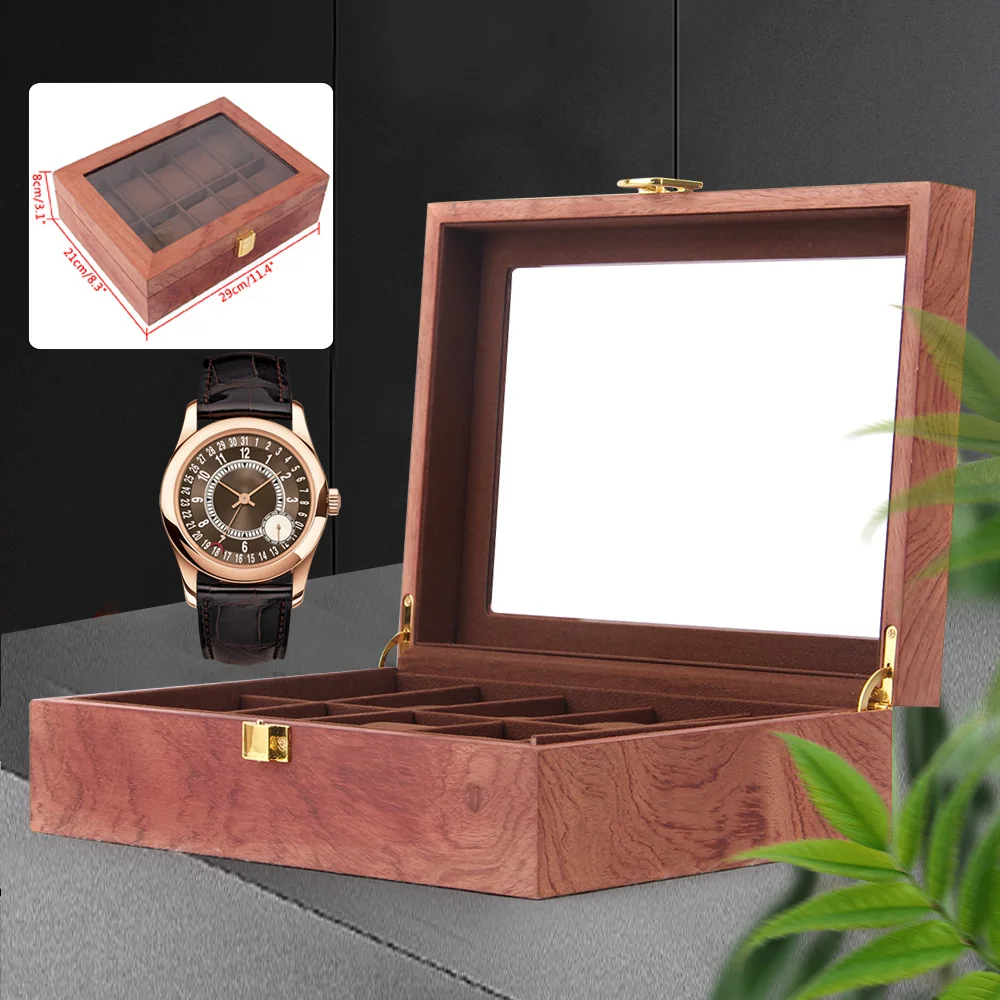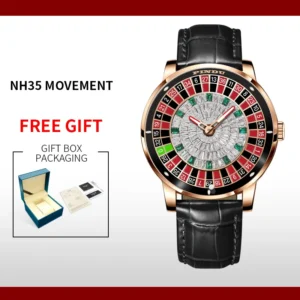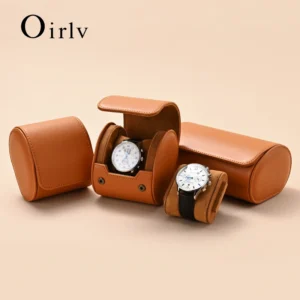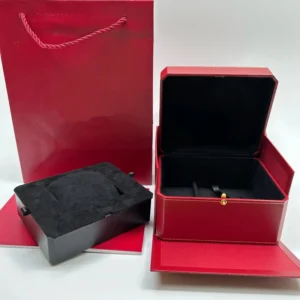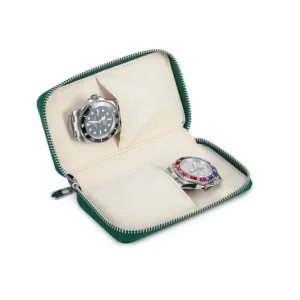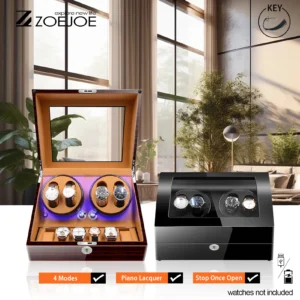Introduction: Why Proper Watch Storage Matters
Proper watch storage encompasses solutions that protect timepieces from physical damage, environmental factors, and mechanical stress while maintaining their organization and accessibility. For watch enthusiasts and collectors, dedicated storage isn’t just a luxury—it’s essential for preserving both the function and value of your timepieces.
Without appropriate storage, watches face numerous risks that can diminish their longevity and worth:
- Scratches and damage from contact with other watches or hard surfaces
- Dust accumulation affecting movement performance
- Exposure to humidity causing corrosion of delicate components
- UV light fading dials and degrading materials
- Mechanical issues in automatic watches from lack of movement
The importance of watch collection storage planning becomes increasingly evident as your collection grows. Whether you own two watches or twenty, the right storage solution makes the difference between timepieces that maintain their condition and those that deteriorate prematurely.
This guide will walk you through various storage options, helping you identify which solutions best match your specific collection needs, considering factors like watch types, collection size, protection requirements, and aesthetic preferences.
The Consequences of Improper Watch Storage
When watches aren’t properly stored, they face numerous risks that can significantly impact their condition, performance, and value. Understanding these potential consequences helps emphasize why quality storage solutions are worth the investment.
Physical damage often occurs first and most noticeably. Watches kept loose in drawers or piled together suffer scratches on cases and bracelets, bent spring bars, damaged crowns, and even cracked crystals. These cosmetic issues immediately reduce a watch’s appeal and value, sometimes by hundreds or thousands of dollars depending on the timepiece.
Environmental factors pose more insidious threats. Excessive humidity causes oxidation and corrosion of movement components and case materials. Watches stored in bathrooms or humid basements are particularly vulnerable, with moisture potentially causing damage that requires expensive servicing. Temperature fluctuations lead to condensation inside the case, which can rust steel parts and deteriorate lubricants. UV light exposure fades dials and damages materials like leather straps over time.
For automatic watches, extended periods of inactivity create their own problems. The lubricants in the movement can congeal, leading to increased friction when the watch is eventually worn. This often necessitates more frequent service intervals, adding to ownership costs.
The financial impact of improper storage extends beyond repair expenses. Industry experts estimate that watches in poor condition due to improper storage can lose 30-50% of their resale value compared to well-maintained examples. For luxury timepieces, this difference can amount to thousands of dollars.
Implementing long-term watch storage protection strategies isn’t merely about being meticulous—it’s about preserving your investment and ensuring your watches continue to bring joy for years to come.
Watch Boxes: The Foundation of Any Collection
Watch boxes represent the most fundamental and versatile storage solution for any collection. These dedicated containers provide organized, protective housing for multiple timepieces while often serving as attractive display pieces themselves.
A quality watch box features individual compartments with cushioned slots that hold watches securely while preventing contact between pieces. These compartments typically accommodate watches of various sizes, though some are better suited for larger timepieces than others. The interior lining—usually velvet, suede, or microfiber—provides a soft surface that prevents scratching and absorbs minimal moisture.
Watch boxes come in diverse materials and designs, from classic wood constructions to modern carbon fiber or leather-wrapped options. Glass-top varieties allow visibility of your collection without opening the box, while solid-lid versions offer greater protection from dust and light.
Advantages of watch boxes:
* Excellent physical protection from dust and impact
* Clear organization makes selection easy
* Visual display options for showcasing prized pieces
* Relatively affordable entry point for proper storage
* Available in various sizes to accommodate growing collections
Limitations to consider:
* No winding function for automatic watches
* Require dedicated space in your home
* Limited capacity for larger collections
* Basic models may lack environmental controls
Watch boxes range from affordable options under $50 to premium versions crafted from exotic woods or high-end materials that can cost several hundred dollars. Mid-range boxes ($100-200) typically offer the best balance of quality construction and protective features without unnecessary luxury markups.
Many collectors begin with a simple 5-10 watch box and expand to additional storage as their collection grows. For those with diverse needs, valet-style boxes that include additional compartments for jewelry, cufflinks, or watch accessories provide versatile organization in a single unit.
Exploring various watch box options helps you find the perfect balance between protection, capacity, and aesthetic appeal for your collection.
Watch Winders: Essential for Automatic Timepieces
Watch winders serve a crucial function for collectors of automatic watches, keeping these self-winding timepieces running even when not worn. Unlike quartz watches that rely on batteries, automatic watches harness energy from wrist movement, storing it in a spring to power the watch. Without regular wear, these watches eventually stop running, requiring resetting of time and sometimes date complications when picked up again.
A quality watch winder mimics natural wrist motion through controlled rotations, keeping the mainspring appropriately tensioned and the movement components properly lubricated. This continuous operation is particularly beneficial for watches with complex complications like perpetual calendars or moon phases, which can be tedious to reset.
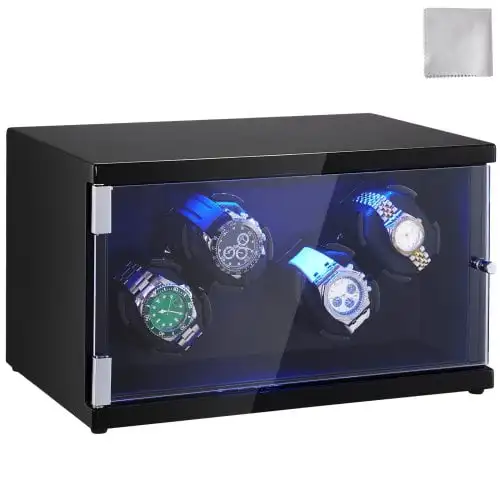
When selecting a watch winder, several technical specifications deserve attention:
| Feature | Importance | What to Look For |
|---|---|---|
| TPD (Turns Per Day) | Critical | Adjustable settings (650-1950 TPD) to match different watch requirements |
| Rotation Direction | Important | Bi-directional, clockwise, counterclockwise options |
| Programmability | Valuable | Customizable rest periods and rotation schedules |
| Noise Level | Comfort | Quiet operation (<50 dB) for bedroom placement |
| Power Source | Practical | Battery options for placement flexibility, AC adapter for reliability |
Quality winders distinguish themselves through several key characteristics. Premium motors operate with minimal vibration, ensuring watches aren’t subjected to unnecessary stress. Precise rotation control maintains optimal winding without overwinding. Quality cushions securely hold watches of different sizes without putting pressure on bracelets or straps.
A common misconception suggests that watch winders cause excessive wear on movements. However, most watch experts agree that properly configured winders actually benefit automatic watches by keeping oils distributed and components exercised, similar to how regular use of a car prevents deterioration from extended idleness.
Watch winders vary dramatically in price, from basic single-watch options starting around $50 to elaborate custom cabinets housing dozens of watches that can cost thousands. Most quality entry-level winders for 1-4 watches range from $100-300, with premium options starting around $400.
For collectors with multiple automatic watches, investing in specialized watch winders provides both convenience and peace of mind, ensuring timepieces are always ready to wear while extending the intervals between required servicing.
Travel Solutions: Protecting Watches On The Go
For watch enthusiasts who travel frequently, dedicated travel storage solutions offer essential protection against the unique hazards of being on the move. Unlike home storage, travel options must prioritize compactness and durability while still providing adequate protection.
Watch rolls represent the most portable option, consisting of a flexible fabric exterior (typically leather, canvas, or synthetic materials) with individual pockets or sections for watches. These roll into a compact cylinder secured by snap closures, zippers, or ties. The primary advantages include extreme portability, lightweight design, and the ability to slip easily into luggage. However, they offer less impact protection than rigid cases and are best suited for short trips or as secondary storage.
Rigid travel cases provide superior protection through hard exterior shells made from materials like aluminum, polycarbonate, or reinforced leather. These cases feature foam interiors with cutouts specifically designed to immobilize watches during transport. Many include additional security features like combination locks or pressure equalization valves for air travel. While bulkier than rolls, they offer unmatched protection against compression, impact, and environmental factors.
Material selection significantly affects both protection and aesthetics. Full-grain leather options develop a beautiful patina over time but require maintenance to resist moisture. Carbon fiber and aluminum options offer excellent strength-to-weight ratios and better water resistance. Ballistic nylon provides durability and water resistance at a more accessible price point.
For frequent travelers, several features deserve special consideration:
- Compact dimensions that fit easily in carry-on luggage
- TSA-approved locking mechanisms for security during baggage screening
- Impact-absorbing interior materials that prevent movement during transit
- Water-resistant or waterproof exteriors to protect against unexpected exposure
- Lightweight construction to minimize added baggage weight
Understanding the fundamentals of protecting watches during travel helps ensure your timepieces arrive safely at your destination. Whether you choose a simple two-watch leather roll for business trips or a robust aluminum case for transporting multiple valuable pieces, the right travel storage solution provides essential peace of mind while away from home.
Premium Storage: Safes and Display Cabinets
For serious collectors with valuable timepieces, premium storage solutions offer enhanced security, environmental control, and presentation capabilities that go beyond basic watch boxes. These high-end options represent significant investments but provide commensurate protection and enjoyment for distinguished collections.
Watch safes combine timepiece storage with robust security features. Unlike conventional safes, these specialized units include watch winders, proper cushioning, and optimized interior configurations specifically designed for timepieces. Premium models feature biometric access systems (fingerprint or retinal scanners), redundant locking mechanisms, and bolting systems for permanent installation. The most advanced options include:
- Programmable humidity control systems maintaining optimal 45-55% relative humidity
- Temperature regulation preventing damaging fluctuations
- LED lighting systems with UV filtration to showcase pieces without harmful radiation
- Automatic inventory systems tracking when watches are removed or returned
- Fire resistance ratings from 30 minutes to 2+ hours at extreme temperatures
Display cabinets offer a furniture-grade approach for collectors who prioritize visibility and accessibility. These showcase pieces feature tempered glass viewing panels, customizable interior lighting, and often incorporate environmental controls similar to specialized safes. High-end models include:
- Museum-quality glass with UV protection and anti-reflective coatings
- Custom-fitted watch holders and winder modules
- Humidity control systems using silica gel or electronic regulation
- Concealed locking mechanisms maintaining clean aesthetic lines
- Handcrafted wood construction with premium veneers or exotic hardwoods
When selecting premium storage, security ratings provide objective measures of protection. UL (Underwriters Laboratories) ratings indicate resistance to various attack methods, while fire ratings specify protection duration at specific temperatures. For collections with significant value, these ratings should align with insurance requirements.
Placement considerations become critical with premium solutions. Safe installation may require professional assessment of floor load capacity, while display cabinets need protection from direct sunlight and heat sources. Many collectors create dedicated watch rooms or incorporate premium storage into home offices, dressing rooms, or personal lounges.
Investing in luxury watch storage setup represents a significant commitment, but for collections of exceptional value or sentimental importance, the protection and presentation capabilities justify the expense. These solutions transform watch storage from simple protection into an integral part of the collecting experience.
Specialized Storage Options for Different Collection Needs
Not all watch collections conform to standard storage solutions. Specialized options address unique collection characteristics, from unusual watch sizes to specific storage environments or display preferences.
Drawer inserts offer elegant integration with existing furniture, transforming ordinary drawers into purpose-built watch storage. These velvet-lined trays with watch cushions slide into standard drawers, providing organized storage without dedicated furniture. Custom versions can be tailored to exact drawer dimensions and watch quantities, making them ideal for discreet storage in bedroom dressers or office furniture.
Pocket watch collectors face distinct challenges, as traditional watch boxes rarely accommodate these larger timepieces with attached chains. Specialized pocket watch stands display these historic pieces upright, while purpose-built cases feature larger compartments with chain management systems. Some antique collectors prefer glass domes or bell jars that showcase a single pocket watch while protecting it from dust and accidental contact.
Oversized modern watches—particularly 45mm+ dive watches or thick chronographs—often don’t fit properly in standard watch cushions. Storage solutions with adjustable or larger compartments accommodate these substantial timepieces without putting pressure on crowns or pushers. Some specialized boxes feature extra-deep compartments specifically designed for watches exceeding standard dimensions.
Vintage watch collectors must address additional preservation concerns. Controlled microenvironments with passive humidity regulation protect delicate vintage components and original dials. Acid-free materials prevent chemical interaction with aging luminous compounds or dial materials. Some collectors utilize conservation-grade storage practices similar to those used in museums, particularly for rare or historically significant pieces.
Mixed collections require flexible approaches. Combination systems integrate watch winders for automatics alongside standard cushioned slots for quartz pieces. Modular systems allow customization as collections evolve, with interchangeable components accommodating different watch types within a unified storage solution.
This table summarizes which specialized storage solutions best match different collection types:
| Collection Type | Recommended Storage | Key Benefits |
|---|---|---|
| Vintage watches | Acid-free materials, humidity control | Preservation of fragile components |
| Oversized modern | Adjustable cushions, deeper compartments | Prevents crown damage, accommodates thick cases |
| Pocket watches | Specialized stands, larger compartments | Chain management, proper display angle |
| Mixed automatic/quartz | Combination winder/storage units | Efficiency, unified aesthetic |
| Limited space | Drawer inserts, vertical storage | Maximizes available space, discreet |
Exploring creative watch storage ideas for collectors reveals solutions perfectly matched to your specific collection characteristics, ensuring every timepiece receives appropriate protection regardless of its type.
Key Selection Criteria: Matching Storage to Your Collection
Selecting the ideal watch storage solution requires a methodical assessment of both your current collection needs and future growth. This decision framework helps match your specific requirements to the most appropriate storage options.
Collection size serves as the primary determinant of storage capacity needs. For new collectors with 1-3 watches, a small watch box or watch roll offers sufficient organization without excessive empty space. Growing collections (4-10 watches) typically benefit from medium-sized watch boxes that accommodate current pieces while allowing room for anticipated additions. Established collectors with 10+ timepieces often require multiple storage solutions or larger cabinets with integrated systems. Consider not just your current count, but realistic growth over 2-3 years to avoid quickly outgrowing your storage.
Watch types significantly influence storage functionality requirements. Collections heavily featuring automatic watches necessitate either regular wearing rotation or watch winders to maintain proper function. Vintage pieces demand superior environmental controls to prevent deterioration of aged components. Collections with diverse case sizes require adjustable cushions to properly secure everything from 34mm dress watches to 47mm divers.
Security needs correlate directly with collection value. Entry-level collections under $5,000 total value typically require basic protection from dust and physical damage. Mid-range collections ($5,000-$25,000) benefit from lockable storage and potential insurance documentation. High-value collections exceeding $25,000 often warrant specialized safes, security systems, or even vault storage for particularly valuable pieces.
Aesthetic preferences matter significantly for visible storage. Watch boxes and display cases become part of your home environment, so consider how they complement your existing decor. Traditional wood finishes with glass tops suit classic interiors, while carbon fiber or aluminum constructions complement contemporary spaces. Consider whether you want your collection visible as a display piece or discreetly secured out of sight.
Budget considerations inevitably influence options, but should be evaluated relative to collection value. As a general guideline, allocating 5-15% of your collection’s value toward quality storage represents a reasonable investment in protection. Prioritize features that directly impact protection (quality cushioning, secure closures, humidity control) over purely cosmetic elements when working within budget constraints.
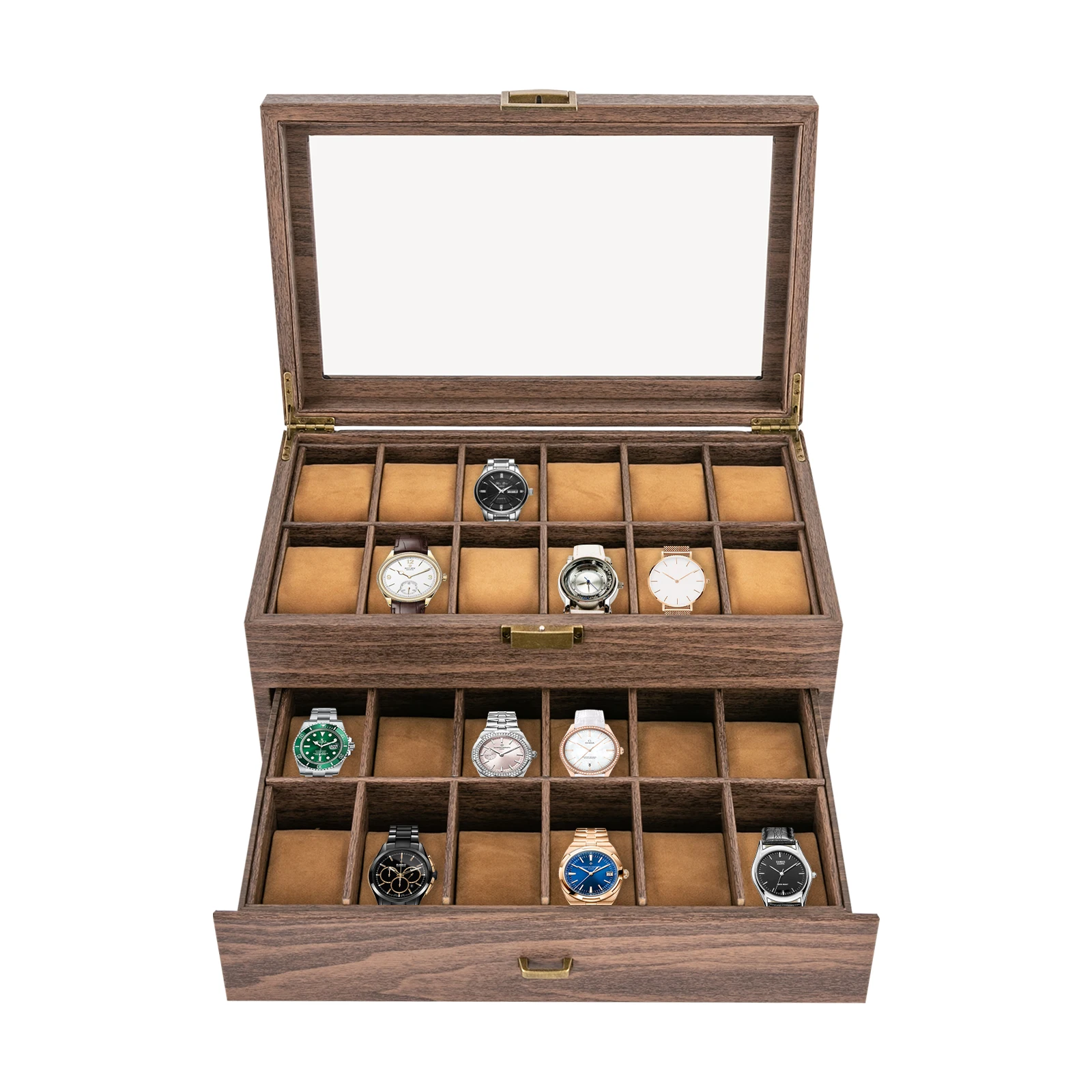
When comparing types of watch storage, use this checklist to determine your specific requirements:
- Current collection size and realistic growth projection
- Proportion of automatic vs. quartz watches
- Value requiring specific security measures
- Display preferences (visible vs. concealed)
- Environmental factors in your location (humidity, temperature fluctuations)
- Space constraints in your home
- Travel frequency requiring portable options
- Budget relative to collection value
This systematic approach ensures your selected storage solution provides appropriate protection while meeting your practical and aesthetic requirements.
Material Quality and Construction: What Separates Premium from Basic
The materials and construction quality of watch storage solutions directly impact both their protective capabilities and longevity. Understanding these differences helps identify truly premium options that justify higher price points through superior performance.
Exterior materials provide the first line of defense against physical damage and environmental factors. Solid hardwoods like walnut, oak, and cherry offer superior durability and thermal stability compared to particleboard or MDF with thin veneers. Premium woods feature tight grain patterns resistant to warping in changing humidity. Genuine leather exteriors use full-grain or top-grain hides that develop attractive patinas and resist wear, unlike polyurethane “leather” that deteriorates and peels over time. Modern premium materials include aerospace-grade aluminum, carbon fiber, and titanium alloys that provide exceptional strength-to-weight ratios and dimensional stability.
Interior linings directly contact your watches and serve critical protective functions. Premium velvet features dense, short fibers that won’t catch on watch components while providing excellent scratch protection. High-quality suede offers similar benefits with different aesthetic properties. Microfiber linings in premium products use fine, non-abrasive synthetic fibers engineered specifically for contact with polished surfaces. Superior cushions maintain their shape over years of use while conforming perfectly to different watch sizes.
Hardware quality dramatically affects long-term satisfaction with storage solutions. High-end hinges use multi-point mounting with precise tolerances that maintain alignment over thousands of opening cycles. Quality clasps operate smoothly while creating secure closures. Locks in premium pieces use brass or steel components rather than zinc alloy or plastic parts prone to failure. Glass elements in display lids should feature beveled edges and tempered construction for safety and durability.
Craftsmanship indicators reveal much about overall quality. Traditional joinery methods like dovetail or finger joints provide superior structural integrity compared to simple butt joints with staples or glue. Hand-finished edges and corners demonstrate attention to detail. Consistent staining with multiple protective layers ensures long-lasting finishes resistant to scratching and fading.
When examining watch storage online, look for detailed material specifications rather than vague descriptions. Close-up images of interior construction, hardware mounting, and edge finishing reveal quality levels not evident in staged promotional photos. For in-person assessment, evaluate the weight (quality materials generally feel substantial), examine consistency of finishes, and test the smoothness of moving parts.
Daily Accents offers luxury watch boxes that exemplify these premium construction standards, providing superior protection that matches the quality of fine timepieces themselves.
Environmental Control: Protecting Against Invisible Threats
Beyond physical protection, proper watch storage must address environmental factors that can damage timepieces over time. Understanding and controlling these invisible threats significantly extends the life of both mechanical and quartz watches.
Humidity represents the most significant environmental concern for watch collections. The ideal relative humidity range for watch storage falls between 45-55%. Excessive moisture accelerates corrosion of steel components and can penetrate supposedly waterproof cases during significant pressure changes. Conversely, extremely dry conditions cause leather straps to crack and gaskets to shrink, compromising water resistance. In regions with seasonal humidity fluctuations or in homes with imperfect climate control, active management becomes essential.
Silica gel packets provide basic humidity control for enclosed storage. These inexpensive desiccants absorb excess moisture effectively but require regular replacement or regeneration (typically by heating in an oven). For more precise regulation, electronic dehumidifiers designed specifically for safes or cabinets maintain consistent humidity levels through condenser technology. Hygrometers should be incorporated into any storage system to monitor actual conditions, with digital versions offering greater accuracy than analog dial types.
Temperature stability proves equally important, with the ideal storage range between 65-75°F (18-24°C). Extreme heat accelerates lubricant breakdown in mechanical movements, while significant temperature fluctuations cause repeated expansion and contraction of components, potentially affecting timing accuracy. Avoid placing watch storage near heating vents, in direct sunlight, or against exterior walls subject to temperature variations.
Magnetism poses an invisible threat particularly dangerous to mechanical watches. Even modest magnetic fields from speakers, tablet covers, or refrigerator magnets can disrupt balance spring function, causing significant timing errors. Premium storage solutions incorporate mu-metal shielding or maintain minimum distances from common magnetic sources. If electromagnetic protection isn’t built into your storage, maintain at least 12 inches of separation from electronic devices and speakers.
Light exposure, particularly UV radiation, fades dials and damages many strap materials over time. While occasional display lighting enhances enjoyment of your collection, continuous exposure accelerates aging. Storage solutions with display windows should incorporate UV-filtering glass or be positioned away from direct sunlight and fluorescent lighting, both of which emit harmful ultraviolet wavelengths.
For optimal watch protection, position storage in interior rooms with stable climate conditions rather than basements prone to humidity or locations near exterior doors where temperature fluctuates. Regularly check humidity indicators and replace desiccants according to their saturation indicators, typically every 2-3 months in moderate climates and more frequently in humid regions.
Luxury Watch Boxes, Men's Watch Boxes, Single Watch Box
Price range: $903.35 through $980.97 Select options This product has multiple variants. The options may be chosen on the product pageSingle Watch Travel Case, Watch and Jewelry Box, Watch Roll Travel Case
Price range: $93.44 through $140.65 Select options This product has multiple variants. The options may be chosen on the product pageAutomatic Watch Winder, Luxury Watch Winder, Single Watch Box
$307.39 Select options This product has multiple variants. The options may be chosen on the product pageLuxury Watch Boxes, Luxury Watch Travel Case
Price range: $200.33 through $224.57 Select options This product has multiple variants. The options may be chosen on the product pageLeather Watch Travel Case, Men's Watch Travel Case, Watch Roll Travel Case
Price range: $91.37 through $92.63 Select options This product has multiple variants. The options may be chosen on the product page4 Watch Winder, 6 Watch Box, Automatic Watch Winder
$512.31 Select options This product has multiple variants. The options may be chosen on the product page
Watch Storage Maintenance: Caring for Your Solution
Even the finest watch storage solutions require periodic maintenance to maintain their protective capabilities and aesthetic appeal. Establishing regular care routines ensures both your watches and their storage remain in optimal condition.
For wooden watch boxes and cabinets, dust weekly with a soft microfiber cloth, following the grain direction to avoid scratch patterns. Every 3-6 months, apply a quality furniture polish appropriate for the specific wood finish—avoid silicone-based products that can build up over time. Check for any developing cracks or joint separation that might indicate humidity issues in your storage environment.
Leather-covered storage requires different attention. Wipe surfaces with a slightly damp cloth monthly to remove dust, followed by a dry cloth to prevent moisture absorption. Apply appropriate leather conditioner annually to prevent drying and cracking, particularly in low-humidity environments. For exotic leather coverings, use specialized products designed for those specific materials.
Interior linings and cushions need regular inspection and occasional refreshing. Vacuum velvet or suede linings using a soft brush attachment on low power to remove dust without damaging fibers. Replace cushions showing compression or deformation, as they no longer provide proper support for watches. Some premium cushions can be rejuvenated by hand-fluffing or brief steam exposure.
Watch winders require specific maintenance procedures. Check rotation function monthly by observing a complete cycle. Listen for unusual noises that might indicate bearing wear or motor issues. Clean power contacts if using battery operation, and inspect winding cup mechanisms for smooth operation. Most quality winders use sealed bearings requiring no lubrication, but consult manufacturer guidelines for specific maintenance recommendations.
Humidity control elements demand particular attention. Replace disposable silica gel packets when their color indicators show saturation. Electronic dehumidifiers need periodic reservoir emptying or desiccant replacement according to manufacturer schedules. Calibrate hygrometers annually by using the salt test method or comparing readings to recently calibrated reference instruments.
Hardware components benefit from occasional attention. Apply minimal amounts of appropriate lubricant to hinges showing stiffness—watchmaker’s oil works well for precision components. Tighten any loosening screws in hinges or clasps. Clean glass components with ammonia-free glass cleaner applied to a cloth rather than sprayed directly on surfaces that might seep into the box interior.
Establishing a quarterly maintenance schedule ensures these tasks aren’t overlooked. Combine this care with your regular watch maintenance routine to develop consistent habits that protect both your timepieces and their storage.
Preparing Watches for Storage: Best Practices
Proper preparation of watches before placing them in storage significantly enhances protection and preserves their condition. Whether storing watches overnight or for extended periods, these best practices ensure your timepieces remain in optimal condition.
Clean the watch thoroughly: Remove surface oils, fingerprints and dust that could otherwise etch into finishes over time. Use a soft microfiber cloth for basic cleaning. For more thorough cleaning, lightly dampen the cloth with distilled water for water-resistant watches, paying special attention to areas between lugs and bracelet links where skin oils and debris accumulate.
Address bracelets and straps properly: For metal bracelets, close the clasp to maintain the bracelet’s shape and prevent stretching. For leather, rubber or fabric straps, store the watch with minimal bend in the strap to prevent permanent creasing or material stress. Consider using curved watch cushions that allow straps to maintain a natural, gentle curve rather than sharp bends.
Position crowns carefully: For watches with screw-down crowns, ensure they are fully secured before storage. For standard crowns, position the watch so no pressure applies directly to the crown, preventing potential stem damage or case leakage.
Prepare automatic watches appropriately: The debate between storing automatics wound versus unwound has valid points on both sides. For short-term storage (under one month), storing them fully wound maintains lubricant distribution. For longer storage, many experts suggest allowing the mainspring to unwind completely to reduce constant tension. If not using winders, consider rotating through your collection regularly, winding and wearing each piece briefly every few months.
Handle special complications with care: For chronographs, ensure the chronograph function is disengaged before storage, as leaving it running places unnecessary stress on the mechanism. For calendar watches, setting the date to the middle of the month (around the 15th) prevents damage during date transitions if the watch runs down and is restarted.
Document and photograph valuable pieces: For insurance purposes, maintain records of serial numbers, purchase documentation, and current condition photographs. Store these records separately from the watches themselves, ideally in both physical and secure digital formats.
Implement a rotation system: For collections not regularly worn, establish a schedule to periodically rotate watches in long-term storage. This prevents lubricants from settling and gaskets from taking permanent set in one position.
When organizing your watch collection, these preparation steps become part of a systematic approach that maximizes protection while maintaining ready access to your timepieces. Even simple precautions significantly reduce the risk of damage during storage periods.
Frequently Asked Questions About Watch Storage
Do watch winders damage automatic watches over time?
When used properly, quality watch winders don’t damage automatic watches. The key is using appropriate TPD (turns per day) settings that match your specific watch’s requirements. Overwinding isn’t generally possible with modern automatics due to their slipping mainspring design. However, poorly made winders with excessive vibration or irregular motion can potentially stress movement components. Choose winders with adjustable settings and smooth, quiet operation.
How should I store watches with leather straps versus metal bracelets?
Leather straps require different storage considerations than metal bracelets. Store leather straps in a moderate humidity environment (40-60% relative humidity) to prevent cracking from dryness or mildew from excessive moisture. Position watches so straps maintain a gentle curve rather than sharp bends that create permanent creases. Metal bracelets should be secured with their clasps closed to maintain proper shape and prevent stretching of links or springs.
Is it safe to store multiple watches touching each other?
Watches should never be stored touching each other. Even minor movement can cause watches to scratch cases, bracelets, or crystals. The harder materials (like ceramic bezels or sapphire crystals) can easily damage softer components of neighboring watches. Always use storage with individual compartments or cushions that maintain separation between timepieces.
What’s the ideal humidity level for watch storage?
The ideal relative humidity range for watch storage is 45-55%. This level prevents corrosion from excessive moisture while avoiding the drying of lubricants and gaskets that occurs in overly dry conditions. Consistency matters as much as the specific level—dramatic humidity fluctuations can cause condensation inside cases, potentially damaging movements and dials.
How can I protect my watches from magnetism?
To protect watches from magnetism, keep storage solutions at least 12 inches away from speakers, magnetic closures, and electronic devices. For enhanced protection, specialized watch safes with mu-metal shielding block external magnetic fields. If concerned about magnetism, consider using a compass test near your storage location—significant needle deflection indicates problematic magnetic fields.
Should I keep watch boxes and papers in the same storage solution?
Original boxes and papers should ideally be stored separately from the watches themselves. These materials take up significant space in watch storage and aren’t necessary for daily use. Store original packaging in a clean, dry location away from direct sunlight to preserve its condition. For valuable collections, maintain a separate, organized storage system for boxes, papers, and warranties, perhaps using archival storage containers for long-term preservation.
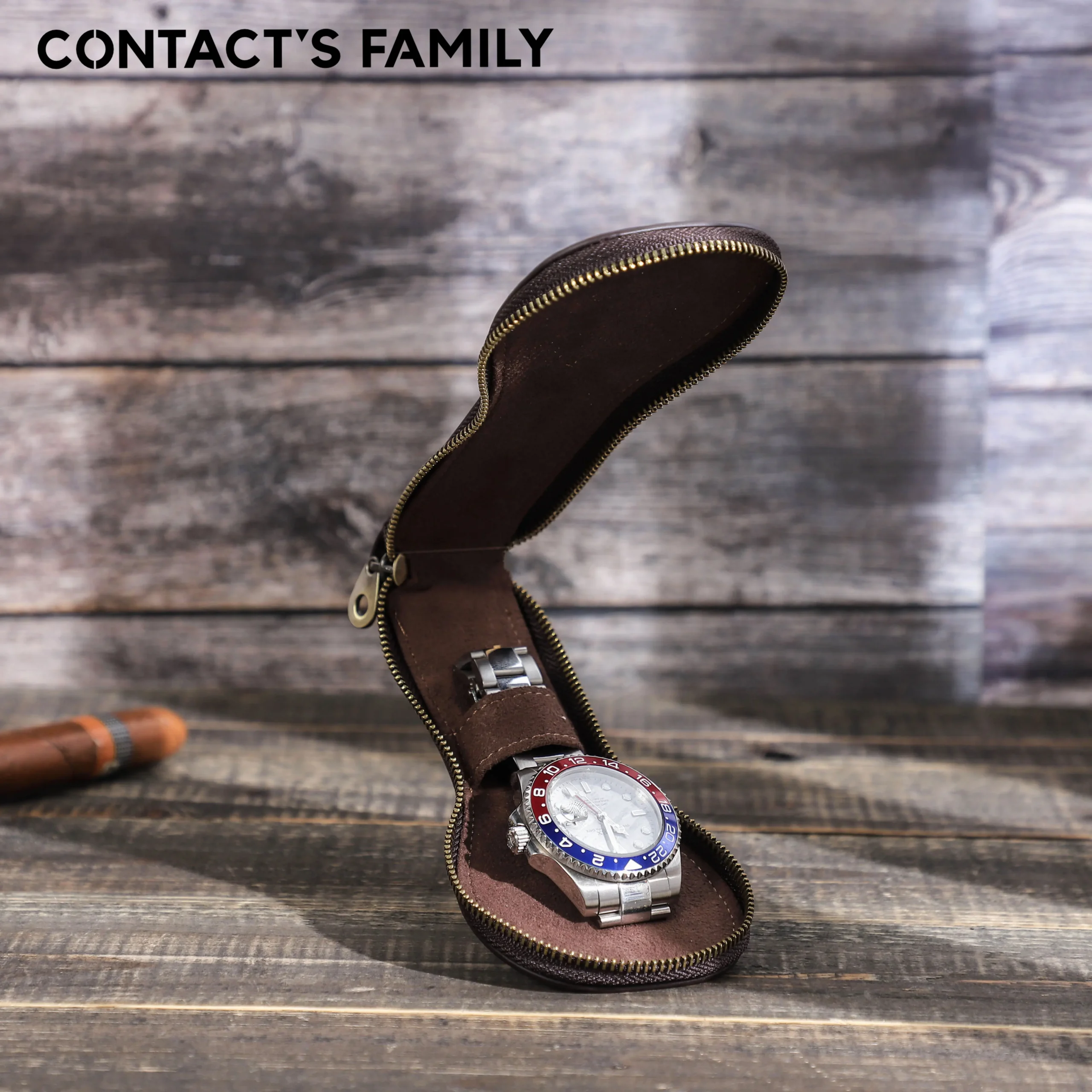
Can quartz watches be stored in winders?
Quartz watches should not be placed in active watch winders, as the rotation serves no functional purpose and may actually cause unnecessary battery drain if the hands encounter resistance during rotation. Store quartz watches in standard watch boxes with individual cushions. For long-term storage of quartz watches, some collectors remove the batteries to prevent potential leakage, though modern batteries have reduced this risk significantly.
How often should I check on watches in long-term storage?
Watches in long-term storage should be inspected at least quarterly. During these checks, wind automatic and manual watches, rotate position slightly to redistribute lubricants, and verify that humidity control elements remain effective. This routine inspection helps identify any developing issues before they cause significant damage and maintains mechanical components in better condition than complete stagnation would allow.
Making the Right Investment: Value-Based Selection
When selecting watch storage, considering the relationship between storage quality and collection value helps make financially sound investments. Rather than viewing storage as merely an accessory purchase, approach it as a crucial protective investment for your timepieces.
A practical cost-benefit analysis should consider the potential financial consequences of inadequate storage. Even minor scratches can reduce a luxury watch’s value by hundreds of dollars, while more significant damage from drops or humidity exposure might necessitate repairs costing thousands. Against these risks, spending appropriately on quality storage represents prudent protection rather than unnecessary expense.
As a general guideline, allocate approximately 5-15% of your collection’s value toward storage solutions. For example, a $10,000 collection warrants $500-1,500 invested in proper storage, which might include a quality watch box with additional travel case or entry-level winder. This proportional approach ensures protection scales appropriately with collection value while preventing either excessive spending or risky underinvestment.
The long-term perspective favors quality over immediate savings. Premium storage solutions typically offer superior construction, more precise environmental control, and greater longevity than budget alternatives. A well-made wooden watch box might last decades with minimal degradation, while inexpensive alternatives often require replacement within years due to hinge failure, cushion compression, or exterior damage.
Insurance considerations further justify quality storage. Many insurers offer reduced premiums for collections stored in approved safes or security systems. Some policies specifically require documented secure storage for coverage of high-value pieces. Even without explicit requirements, having proper storage strengthens claims documentation and demonstrates appropriate care standards.
As collections grow, storage requirements naturally evolve. Plan for expansion by selecting modular systems that accommodate additional pieces or complementary solutions that maintain a cohesive aesthetic. The most cost-effective approach often involves purchasing slightly larger capacity than immediately needed, avoiding the premium paid for multiple smaller solutions.
Quality storage solutions themselves often retain respectable resale value, particularly premium brands with established reputations. While not investment pieces themselves, well-maintained luxury watch winders and boxes typically resell for 50-70% of their original price, significantly better than budget alternatives that hold virtually no secondary market value.
For collectors working with limited budgets, budget-friendly watch storage still offers reasonable protection through strategic prioritization of essential features. Focus first on physical protection and organization, adding specialized features like winders or humidity control as budget allows, upgrading systematically as your collection increases in value.
Top-Rated Brands and Where to Find Quality Storage Solutions
Identifying reputable manufacturers helps navigate the sometimes overwhelming variety of watch storage options available. Several brands have established strong reputations for different aspects of watch storage, providing reliable starting points for your search.
For traditional wooden watch boxes, brands like Wolf, Rapport, and Rothwell consistently produce high-quality options with excellent craftsmanship. These manufacturers use properly seasoned hardwoods, precision joinery, and quality hardware that ensures years of reliable use. Their products typically feature consistent finishes, precisely fitted components, and thoughtfully designed interiors that accommodate various watch sizes.
In the watch winder category, Orbita leads with innovative winding technologies and exceptional motor quality. Wolf also maintains a strong presence in this category, offering reliable performance at various price points. Specialized winder manufacturers like Barrington and Rapport focus on precision rotation control and quiet operation, important considerations for bedroom placement.
For travel solutions, Everest and Hodinkee produce exceptional watch rolls combining protection with portability. Pelican and Zero Halliburton offer nearly indestructible rigid cases adapted specifically for watch transport. These specialized adaptations include custom foam inserts that immobilize watches more effectively than generic travel cases.
When evaluating retailers, several factors indicate reliability. Authorized dealers provide manufacturer warranties and guaranteed authentic products, particularly important when purchasing premium brands. Specialized watch accessory retailers typically offer more knowledgeable customer service than general merchandise stores, providing guidance on technical specifications and compatibility with specific watch types.
Quality online retailers should provide detailed product specifications including precise measurements, material descriptions, and clear information about features like cushion adjustability and interior capacity. Comprehensive product photography showing interiors, hardware details, and scale references helps assess quality before purchase. Look for retailers offering satisfaction guarantees and reasonable return policies that allow proper evaluation.
For assessing build quality through online descriptions, focus on specific details rather than general marketing language. Look for information about wood species rather than simply “genuine wood,” specific lining materials rather than just “premium interior,” and detailed hardware descriptions. Weight specifications often indicate construction quality, as substantial materials typically weigh more than lightweight alternatives.
Watch enthusiast forums and review sites provide valuable real-world feedback on durability and functionality beyond manufacturer claims. These communities often identify specific models and brands that either outperform their price point or fail to deliver expected quality, helping you make more informed decisions.
Watch Storage for Special Circumstances: Beyond the Basics
Certain collecting situations require specialized approaches beyond standard storage solutions. Addressing these unique circumstances ensures appropriate protection regardless of collection characteristics or situational challenges.
For extremely valuable or rare watches, consider enhanced security measures like hidden or disguised storage. Some premium providers create custom solutions resembling ordinary furniture with concealed watch compartments accessible through biometric authentication or RFID activation. These discreet options maintain high security without advertising the presence of valuable items. For museum-quality pieces, conservation-grade storage using archival materials and precise environmental monitoring provides appropriate long-term preservation.
During home renovations or moves, temporary storage requires special attention. Waterproof, impact-resistant cases with custom foam interiors offer superior protection during these high-risk periods. Consider temporary offsite storage in bank vaults or specialized secure facilities for exceptional pieces during extensive renovations involving multiple contractors or extended construction timelines.
For collectors with multiple residences, consistent storage across locations prevents unnecessary transportation risks. Maintaining identical or similar storage systems in each location, with consistent environmental controls and security features, allows watches to remain safely stored at each residence rather than traveling with the collector. Climate-specific adaptations might include enhanced dehumidification in humid coastal properties or additional moisture sources in extremely dry environments.
Inherited collections often present unique challenges, particularly when comprising vintage pieces with specific care requirements or sentimental value. These collections may benefit from specialized conservation approaches focusing on preservation rather than regular wear. Custom storage solutions can incorporate display elements that honor the collection’s heritage while providing appropriate protection, perhaps including dedicated space for historical documentation or photographs.
During watch service periods, temporary storage for the remainder of your collection still deserves attention. Purpose-made service pouches provide individualized protection, while dedicated service-period storage boxes offer simplified access to watches in active rotation during the absence of pieces being serviced.
These specialized approaches demonstrate how watch storage can be adapted to address virtually any collecting circumstance, ensuring appropriate protection regardless of unique situations or collection characteristics.
Is Expensive Storage Always Better? Quality vs. Price
The relationship between price and quality in watch storage isn’t always straightforward. Understanding which premium features provide meaningful protection helps allocate your budget effectively without overspending on purely cosmetic enhancements.
Premium features that genuinely enhance protection justify higher prices. Precise-tolerance construction prevents dust infiltration better than loosely fitted components. Quality cushioning materials maintain their supportive properties for years instead of months. Reliable humidity control systems provide measurable protection against corrosion and deterioration. These functional benefits directly protect your timepiece investment and represent worthwhile expenditures.
Conversely, some premium features primarily enhance aesthetics without significantly improving protection. Exotic wood veneers, luxury brand logos, and decorative hardware may increase price substantially without corresponding functional benefits. While aesthetic considerations matter for visible storage, evaluate whether substantial price increases for cosmetic features align with your priorities and budget.
Several value-oriented brands offer excellent protection at moderate prices. Companies focusing on functional quality rather than luxury branding often provide superior performance-to-price ratios. These manufacturers typically emphasize construction quality, durable materials, and practical features while minimizing marketing expenses and luxury packaging that increase consumer costs without enhancing product functionality.
For budget-conscious collectors, strategic DIY modifications can enhance basic storage. Adding silica gel packets to standard watch boxes improves humidity management. Replacing generic cushions with quality aftermarket versions provides better support. Installing additional soft lining material in travel cases increases protection. These targeted improvements address functional weaknesses without replacing entire storage systems.
In some cases, simpler solutions outperform complex ones. Individual watch pouches made from microfiber provide excellent scratch protection during travel at minimal cost. Basic wooden boxes with quality construction often provide better long-term durability than feature-laden alternatives with electronic components that eventually fail. Single-watch winders focus power on one timepiece rather than distributing it across multiple positions, sometimes providing more consistent rotation.
When evaluating price-to-performance ratio, focus on construction quality, material durability, and protective effectiveness rather than brand prestige or decorative elements. The most cost-effective approach often involves investing in quality for features directly contacting or protecting your watches while accepting more moderate quality for purely aesthetic elements.
Remember that even modestly priced storage still represents significant protection compared to improper storage methods like loose drawer storage or stacking watches. The greatest value loss occurs not between good and great storage, but between proper storage and no dedicated storage at all.

